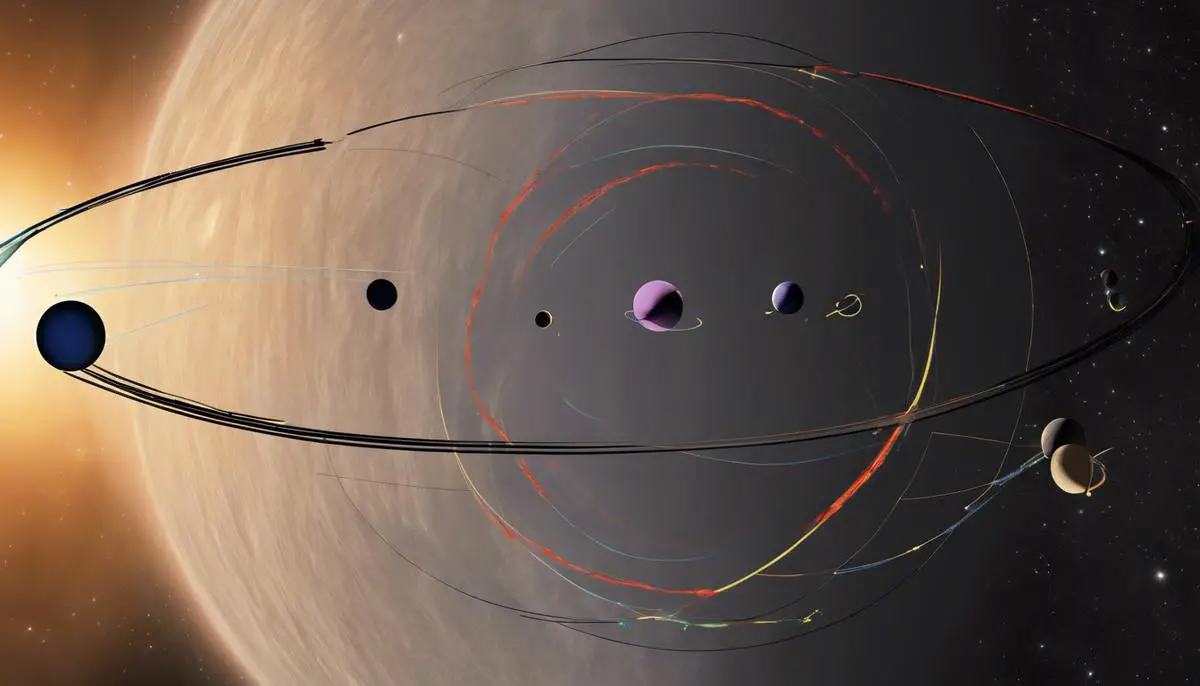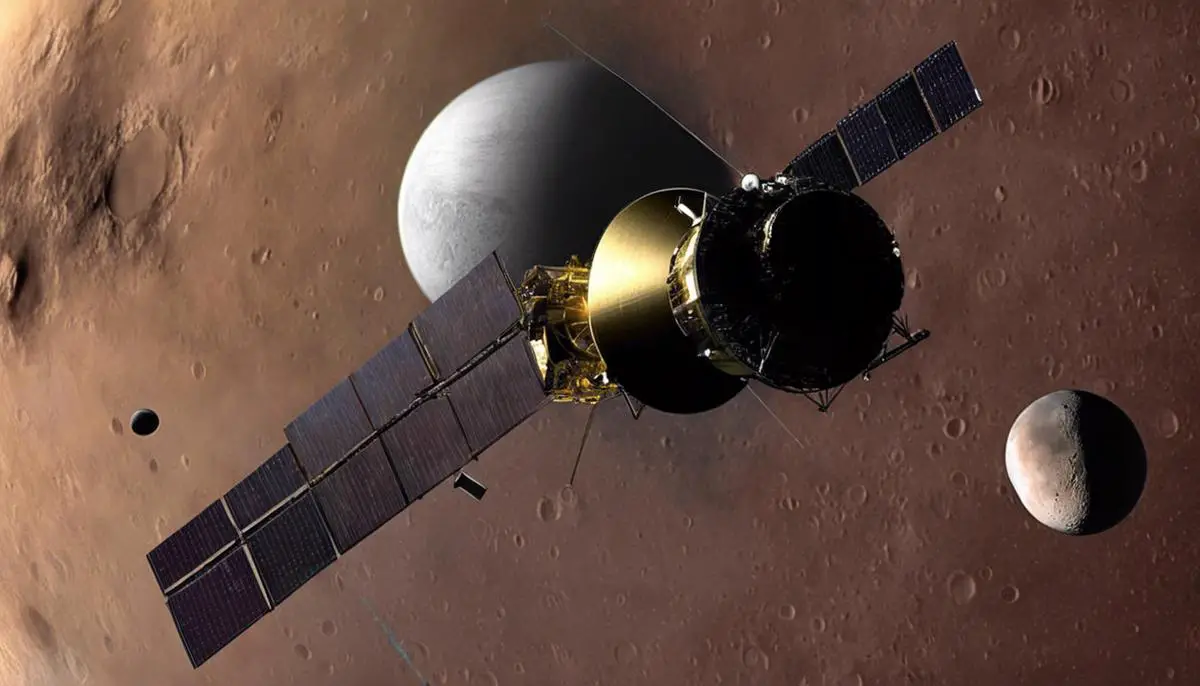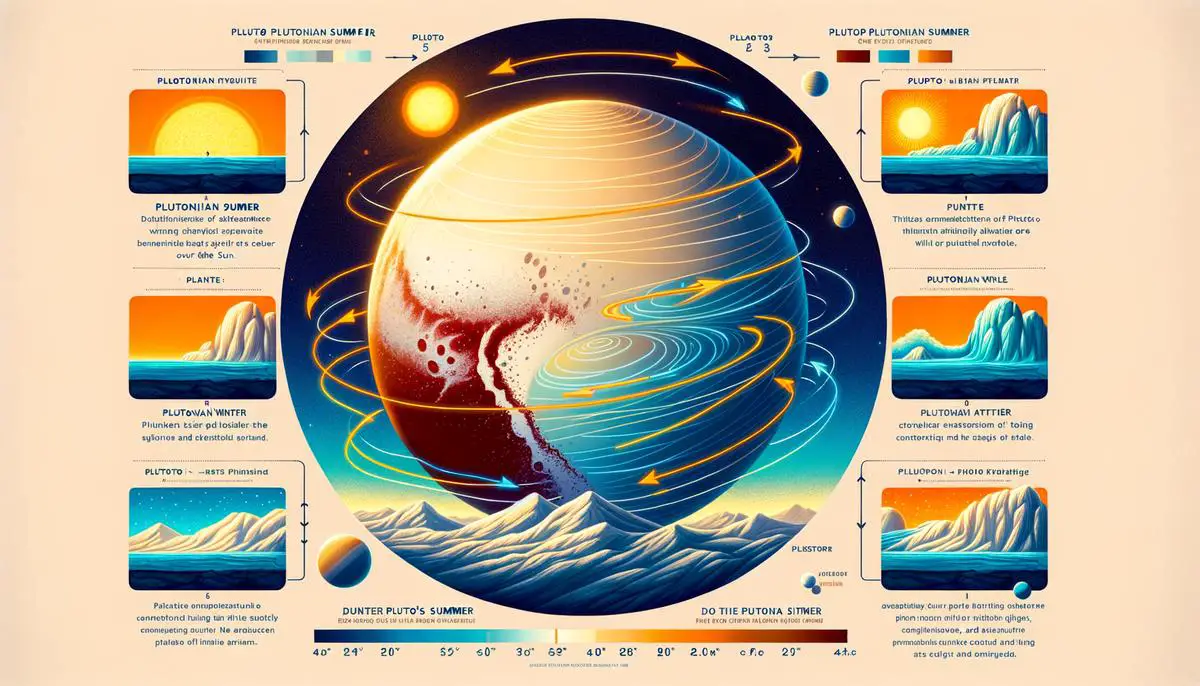Pluto's Orbit Dynamics
Pluto's path around the Sun is an elongated, 248 Earth-year-long journey. This prolonged orbit stems from its peculiar orbital characteristics. Pluto's orbit is highly eccentric, stretching far out before swinging back close to the Sun.
Pluto's orbit is also inclined at about 17 degrees to the solar system's main plane, where most planets lay out their orbits. This inclination causes Pluto to travel above and below the plane where the other planets orbit the Sun.
The concept of resonance keeps Pluto from colliding with Neptune, despite their paths crossing. Pluto orbits the Sun twice for every three Neptune orbits. This 2:3 resonance ensures they are never in the same place at the same time, preventing any collisions.
The gravitational interaction between Neptune and Pluto, coupled with their synchronized orbits, reinforces Pluto's elongated and tilted orbit while ensuring they avoid each other. This orbital dance highlights the intricate balance and order within our solar system, showcasing the fascinating interplay between celestial bodies.

Historical Context of Pluto's Orbit
Pluto was discovered in 1930 by Clyde Tombaugh and was initially considered the Solar System's ninth planet. However, Pluto's orbit was highly eccentric and inclined, characteristics that intrigued astronomers for decades.
Advances in technology, such as the Hubble Space Telescope, launched in 1990, provided clearer images of Pluto and its largest moon, Charon. This era of technological advancement brought Pluto back into the astronomical spotlight.
In the early 21st century, discoveries of objects beyond Neptune began to challenge the definition of a planet. Worlds similar in size to Pluto were found, blurring the lines of planetary classification. In 2006, the International Astronomical Union reclassified Pluto as a dwarf planet, reflecting a significant shift in astronomical thought and classification.
NASA's New Horizons mission, launched in 2006, reached Pluto in July 2015. The flyby revolutionized our understanding of Pluto, revealing an intricate world with mountains of water ice, plains of nitrogen ice, and geological activity. The mission also shed light on Pluto's interaction with its surrounding environment, including its atmosphere and the Kuiper Belt.
Pluto's journey from its discovery to its reclassification and the New Horizons mission showcases the dynamic nature of space exploration and scientific discovery. Each chapter in Pluto's story has paved the way for new questions and challenges, continuously evolving our understanding of the universe.

Impact of Pluto's Orbit on Its Climate
Pluto's peculiar orbit significantly influences its climate. As Pluto approaches its closest point to the Sun (perihelion), the increase in solar heat causes the ice on its surface, primarily composed of nitrogen, methane, and carbon monoxide, to sublimate directly from solid to gas. This process creates a thin, transient atmosphere.
As Pluto moves away from the Sun towards its farthest point (aphelion), temperatures drop, and the atmosphere freezes out. The gases that had formed the atmosphere condense and fall back onto the surface as snow.
This cyclical transformation of Pluto's climate has significant implications. It suggests an active geological life cycle driven by the Sun's warmth, albeit different from Earth's. The sublimation and refreezing process may also shape the landscape, creating unique features.
The transient atmosphere creates a dynamic environment that could potentially support exotic forms of life adapted to extreme cold and long periods of deep freeze. Additionally, the freezing and thawing cycle likely plays a role in reshaping Pluto's icy crust, indicating that Pluto is an active world with its own form of seasonal changes and possibly geological processes.
Understanding these processes provides valuable insights into not only Pluto but also other similar bodies in the Kuiper Belt and beyond. Pluto's orbital dance and its impact on the dwarf planet's climate reveal the incredible transformation and dynamism present even on the edge of our solar system.

- Stern SA, Bagenal F, Ennico K, et al. The Pluto system: Initial results from its exploration by New Horizons. Science. 2015;350(6258):aad1815.
- Malhotra R. The origin of Pluto's orbit: implications for the solar system beyond Neptune. Astronomical Journal. 1995;110:420.
- Binzel RP, Earle AM, Buie MW, et al. Climate zones on Pluto and Charon. Icarus. 2017;287:30-36.
![]()